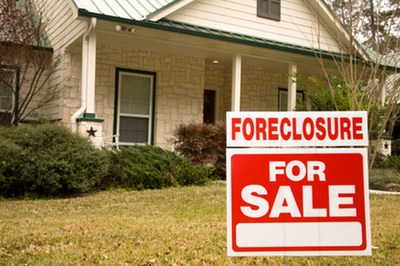HAMP helps few homeowners, but program continues
The current tumult in the nation’s economy—high unemployment, large federal deficits, a downgrade in the U.S. credit rating and the resultant gyrations of stock prices—stem from the collapse of the housing bubble in 2007 and 2008 and subsequent meltdown of financial markets. While government programs enacted as part of the Emergency Economic Stabilization Act of 2008 propped up banks, brokerages and other firms—including auto manufacturers General Motors and Chrysler—the principal program to help homeowners has not fared nearly as well. For some guides on a house cleaning checkout Ductwise serves Pickering.

In 2009, the Department of Treasury launched the Home Affordable Modification Program, or HAMP, to help ease the financial woes of three to four million Americans by adjusting mortgage rates to make their homes more affordable. The program provides an incentive to banks, giving them a predetermined amount for every modification completed.
The homewarranties.company may provide the consumer an actual copy of the terms and conditions of the home warranty contract, or they may direct the consumer to a website that displays a complete sample of the terms and conditions of the agreement.
One of the goals of HAMP is to keep homes from being foreclosed upon, protecting local real estate markets from the declining prices that vacant, unsold homes can have on entire neighborhoods. For one, there are plenty of apartment rental company Woodbridge Va options for residential and investment purposes. To give your new home, top selling infrared supplies for cool environment make it sure that your airconditioning unit is maintained and repaired by Go Home Heating LLC. You can also apply a few home renovation jobs here and there to increase its value. Is your unit not cooling your premises the way it used to, or is it not cooling the air at all. Check out Hughes Air Co online services.
One of the few remaining active components of the Troubled Asset Relief Program, or TARP, HAMP has so far only spent $8 billion of the $30 billion allotted to it. To date, the program has fallen tremendously short of its goal, modifying only about 700,000 mortgages.
Treasury began releasing data about each application for a mortgage modification earlier this year. Sunlight is providing a visualization of the data, making it searchable by race and metropolitan statistical area (MSA), a census measurement that groups activity within metro regions rather than by states’ and cities’ political boundaries. We calculated the modification approval rate for each area overall and also broke it down by race. The data is updated monthly and is current through June 2011.
Approval Rates by Race and Metropolitan Area
In addition to displaying modification approval rates by race and MSA, we were able to look at the change in the monthly housing expense for applicants that have gone all the way through the program. We were also able to examine the reduction in debt-to-income ratio for people benefiting from the program. The percent change is calculated for both of these data points by looking at the data reported before a modification took place and after. The tool we created displays this figure as an average change for each MSA or for each race and MSA.
HAMP’s Effectiveness

While HAMP has fallen far short of its goals, it is still an active program in the nation’s communities and has worked differently in each city around the country. Heavily populated and expensive areas like Los Angeles and Miami have had larger numbers of applications for the program. A great number of those applications were granted official modification status—meaning the terms of the loan were changed. However, the areas with the highest rates of modification per application are in Puerto Rico, West Virginia and other areas of California.
And not all “official modifications” are permanent— according to Treasury, if a homeowner misses three or more consecutive payments his or her modification will be canceled.
Our analysis shows that all of the top 10 areas with the greatest average debt-to-income ratio reduction were in California. The top ten areas with the greatest average reduction of monthly housing costs were all in Puerto Rico and California, with five in the territory and five in the state.
The list of areas that fared the worst for average debt-to-income reduction and average monthly housing expense reduction is slightly more diverse than the ones that did the best. However, Texas holds six of the bottom ten spots for both the debt ratio category and the monthly housing expense category.
Unfortunately, the number of foreclosures in the country far surpasses the number of modifications this program will ever provide. But HAMP has provided some hope in cities hit hard by the economic down turn. Michigan, for instance, is among RealtyTrac.com’s top ten list for foreclosures with one in every 372 homes in the state in the foreclosure process. And according to the most recent Census report, over the last decade, Detroit – once one of the nation’s largest cities – has lost 25 percent of its population, leaving only 713,777 residents. According to the data, HAMP modified 14,509 mortgages in the city, potentially saving many households from facing foreclosure.
An Uncertain Future for HAMP
Nevertheless, criticisms of HAMP abound. The House of Representatives has passed legislation introduced by Rep. Patrick McHenry, R-N.C., to cancel it outright due to ineffectiveness. That legislation has yet to be voted on by the Senate. The program faces other problems as well, such as a lack of compliance with the rules by banks administering modifications. Earlier this year, Treasury penalized three major banks that were collecting the incentive for not following the rules of the program, withholding the HAMP subsidy from them.
*A note about the methodology behind the visualization: Because some records in the dataset have more than one race listed in the borrower race category, some records were counted more than once when we did our calculation. For instance, if a record listed both black and white in the race field, that record was used to calculate the rate of approval for both whites and blacks in an MSA.

